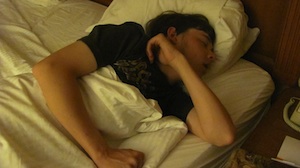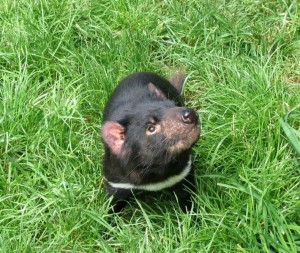 So how did you sleep last night? When the alarm went off this morning, was it pretty easy to hop out of bed or were you “dead to the world?” Is getting up and out during the school week a constant struggle for you and your family? Maybe it’s actually a bigger issue for parents who are trying to drag dozy students to the car or bus, semi-clothed, to ensure that they make it to school on time.
So how did you sleep last night? When the alarm went off this morning, was it pretty easy to hop out of bed or were you “dead to the world?” Is getting up and out during the school week a constant struggle for you and your family? Maybe it’s actually a bigger issue for parents who are trying to drag dozy students to the car or bus, semi-clothed, to ensure that they make it to school on time.
This scene has been acted out for generations because teenagers’ hormonal changes make most of them what researchers call “owls.” With pronounced chemical changes in their bodies–in particular, the late-evening release of melatonin–it’s sometimes difficult for teens to get to sleep early, even if they want to. And by the way, health guidelines dictate that teens should be sleeping 9 to10 hours per night, but the majority probably struggles to get seven hours. That’s a problem, and current research indicates that it’s not just an issue for teens, but for North American society at large.
Let’s consider some of the issues associated with sleep deprivation and its impact. More and more, modern life explicitly or implicitly sends messages to all of us that minimal sleep is okay, or perhaps even cool. Last week in a large survey of over 100,000 high school students in the Toronto District School Board, it became apparent that a host of factors are imposing themselves on sleep time. They include the need to complete school work, involvement in a broad spectrum of co-curriculars and community activities, social media dynamics, and of course, the pressure and temptation of late-night texting and digital chatter between friends. Three-quarters of the students in the Toronto study admitted to not getting enough sleep on a regular basis. Ultimately, students arrive in class the next day expecting to learn when their brains crave rest. Clearly, this is not the best arrangement.
Quality of sleep is also an important factor. If we do not sleep long enough, we don’t get enough REM sleep. That’s the deep-sleep that actually embeds all the little branches of learning from a school day into the brain so that it becomes knowledge and understanding and consolidating memory. During a recent sleep study conducted by Brock University, researchers found that sleepy subjects found it very difficult to notice errors or absorb new material effectively. In the words of the study’s leader, psychologist Dr. Kimberly Coté, when sleep-deprived, “you are effectively blunted to do anything inspirational or active; you don’t really care about anything.” So if many, if not the majority of teens are sleep-deprived, this presents interesting issues for schools and helping students be actively engaged and meet their potential as learners.
But it’s not just about kids. Adults are guilty of cutting corners on the sleep front as well. Sleep deprivation increases stress and reduces productivity. Behaviorial scientists and brain researchers at Harvard have studied this phenomenon and recently declared that America is facing a national crisis. There is no reason to believe that Canadians are any different. In the USA it is estimated that chronic sleep deprivation is currently costing American companies $63-billion per year because of sleepy and ineffective employees who are not really on task. That’s a staggering figure and a significant cost to society.
When we consider personal health, the discussion usually focuses on diet and exercise. Both are very important. But adults’ poor habits are setting bad examples for children and teens. Dr. Reut Gruber, a clinical psychologist at McGill University, is leading a national committee of Canadian psychologists, pediatricians and researchers who want to develop a new national Public health conversation that gives sleep the same weight as diet and exercise—together forming the three critical pillars for personal health throughout life. Sleep simply needs to be a much greater part of the popular dialogue around key health priorities.
I know that our students have heard about the importance of sleep before—and we will continue to remind them. But the evidence is actually mounting about how important rest is to students’ capacity for engagement and effective learning. Indeed, the inability to fall asleep is a question in itself. It seems that armies of young Canadians in high school, colleges and universities continue to sleep very little and are trying to adapt during the day by drinking so-called “energy drinks.” This is not deemed to be an effective practice for anyone and it is potentially quite damaging for teens in a host of ways, including negative impact on oral health, never mind the caffeine crash that comes shortly after consuming one of these drinks.
So the simplest thing is for young people to do is to control what they can control. They should do their utmost to get to bed early as frequently as possible during the school week – and that simple change could very well be the best favour they could do for themselves this year. As a result, performance in school and the capacity to enjoy all activities will all likely improve. Our teens should each conduct a little test. They should get to bed early tonight and for the next few nights and see if they feel more energized.
Sweet dreams, my friends!! –Christopher Shannon, Headmaster
 This past weekend was honestly, INCREDIBLE! I would say the overall theme was…. animals, but really different animals. We visited a zoo on Saturday and a seahorse and platypus well on Sunday. I had the chance to see some great Tasmanian animals and learn so much more about their lifestyle.
This past weekend was honestly, INCREDIBLE! I would say the overall theme was…. animals, but really different animals. We visited a zoo on Saturday and a seahorse and platypus well on Sunday. I had the chance to see some great Tasmanian animals and learn so much more about their lifestyle.



